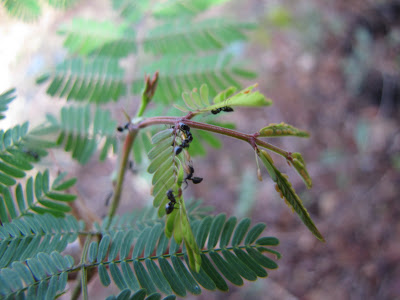What does that mean, exactly? Well basically, there are these trees in Costa Rica called acacia trees. They are often inhabited by ant colonies, which range from very aggressive Pseudomyrmex spinicola:
to very non-aggressive Crematogaster brevispinosa:
There is also a bird called the Rufous-naped wren that nests in these trees to get protection from the vicious ants. However, previous studies have shown that a lot of Rufous-naped wren eggs are destroyed by other Rufous-naped wrens. We decided to find out whether they are doing this to get a better nesting site by testing nest destruction between two different species of ants. Here's how.
IP Day 1
My IP started a day earlier than everyone else's it seemed. While everyone else spent their day typing up data sheets and lazing around, Chelsea, Liz, and I spent our day making 120 imitation wrens nests out of grass. It took us all day.
IP Day 2 & 3
On the second and third days, we woke up and went out into the field at 5:30 AM and didn't come back until 6 PM. What were we doing all day? Locating acacia trees and putting the wrens nests (complete with a quail egg and a clay egg) into them. Oh and did I mention that the ants attack you? Because they do.

And it hurts.

Somehow, all the pain of the ant stings (which must have been somewhere in the hundreds each day) made us extremely giddy, so when we weren't getting stung or putting nests up in trees, we were busy falling into fits of giggles. Exhibit A:
IP Day 4 & 5
Spent all day taking the nests down and checking for predation. We got predation in 40 of our 120 nests, which was a pretty good number. Most of them were wren-caused, which was even better.


The sad part is after all this work, our results weren't significant. Its true that we could make a statement based off that (wren nest destruction is not patterned) but still a little disappointing
So at the end of the day, we were pretending we felt like this:
when really, we felt like this:
Ah well. The joys of science.











